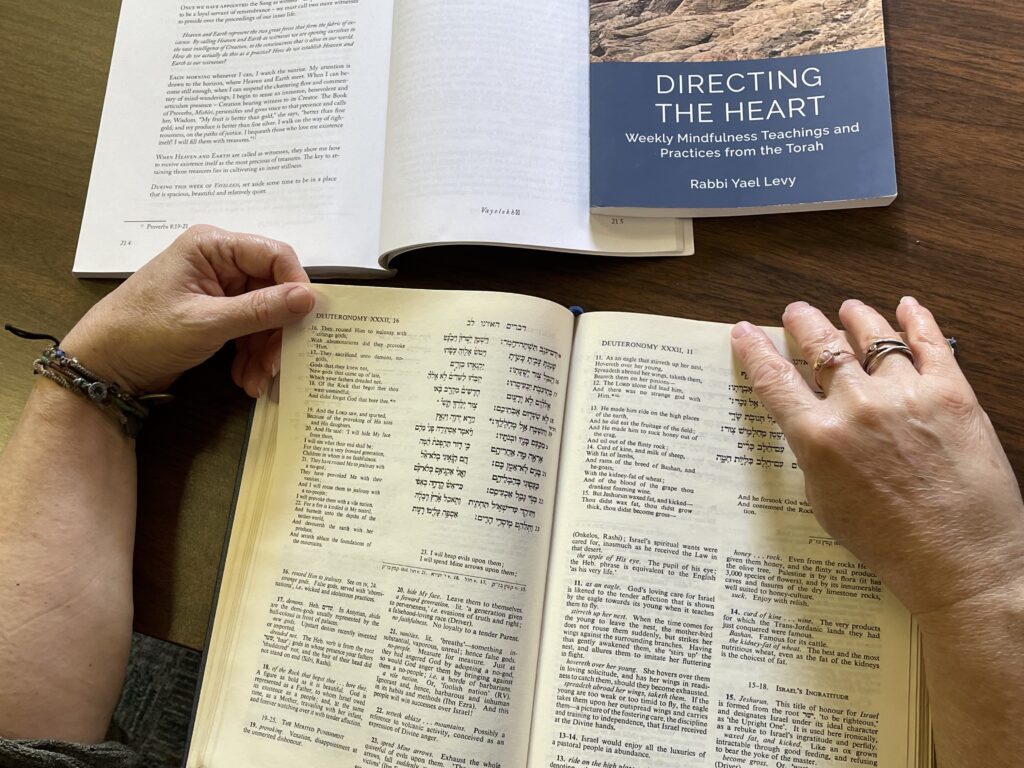
Yesterday, we came together to celebrate Shavuot. As with many Jewish holidays, Shavuot is a holy day which has gained new meanings and interpretations over time. The ancient Hebrews marked this day (50 days after the barley reaping) as the start of the wheat harvest. In temple times, the priests tied this period with calls for offerings (the original omers) and recitation of blessings for a bountiful growing season. The Kabbalists later linked the omer counting to seven weeks of deep spiritual reflection ending at Shavuot. And Moses and the wandering Israelites received the Torah at Mount Sinai at this time.
Just as Shavuot has many origin stories, it has many names. Most simply, the holiday translates as the “The Festival of Weeks.” (You might recognize the word shavuah – week – from the saying shauvah tov shared at the end of Shabbat to mean “have a good week.”) Other names for the holiday include “Festival of the Harvest” (Chag Ha-Katzir), “Day of the First Fruits” (Yom Ha-Bikkurim), and “The Season of the Giving of the Torah” (Z’man Matan Torateinu). This last name is the one I want to explore a bit as it reminds us that while we can mark the mythological moment when we were given the Torah, receiving it is a never-ending project. Torah (and I use this term to mean both the Five Books of Moses and the full catalogue of Jewish writings and teachings, old, new, and yet to be) is not revealed to us all at once; rather it’s meaning perpetually comes into being bit-by-bit, year-by-year, in each moment, through our actions and interactions.
This point lies at the heart of our mission at Sukkat Shalom, to be a spiritual community finding contemporary meaning in traditions, and the center of the work of our first Adult B’ Mitzvah cohort. As that program continues to unfold, we’ve adopted Sarah Hurwitz’s (contemporary classic) Here All Along: Finding Meaning, Spirituality, and a Deeper Connection to Life–in Judaism (After Finally Choosing to Look There) as our textbook. Hurwitz is a clear and engaging author who shares her own spiritual and intellectual journey with Judaism at the same time as she offers teachings on some of its most fundamental concepts including prayer, mitzvot, and Shabbat. When I first suggested this book as a resource for participants on the Adult B’ Mitzvah journey, I didn’t fully appreciate the power of the text to carry us through the first 6 months of this process. It was a happy accident, as Bob Ross liked to say. This moment of revelation is one worthy of celebration. Did Hurwitz imagine groups might use her book this way? What would she think? What additional lessons might she offer readers with this use in mind?
I’m excited to be working with the ten people (just realizing they are a minyan!) who are on this journey together. Their reasons for embarking on study towards this milestone vary but all share an interest in learning more about Jewish traditions and finding ways to use study and ritual to enrich their lives. At a time when so many Jews are questioning their ties to the larger Jewish community – including out of fear of antisemitism and frustration with the state of Israel – their interest, dedication, and commitment feels pretty miraculous. I’m excited to for you to hear more from them in the coming months, hopefully in this space as well as at Shabbat services and their culminating ceremony in March 2026.
A recent guest on Judaism Unbound suggested Judaism, with its layers and layers of traditions, texts, laws, and lessons, is not a religion built for young people. Really, they meant it wasn’t something that could be mastered by young people in a few years of Hebrew School. Judaism is a cumulative experience, one that takes a lifetime of moments of revelation to fully appreciate. This Shavuot, I’m grateful for this community for providing me space to learn and to share the fruits of my understandings. And I look forward to hearing your moments of revelation, in every season.
Jodi Kushins
KSS, Past Chair & Lay Leader
